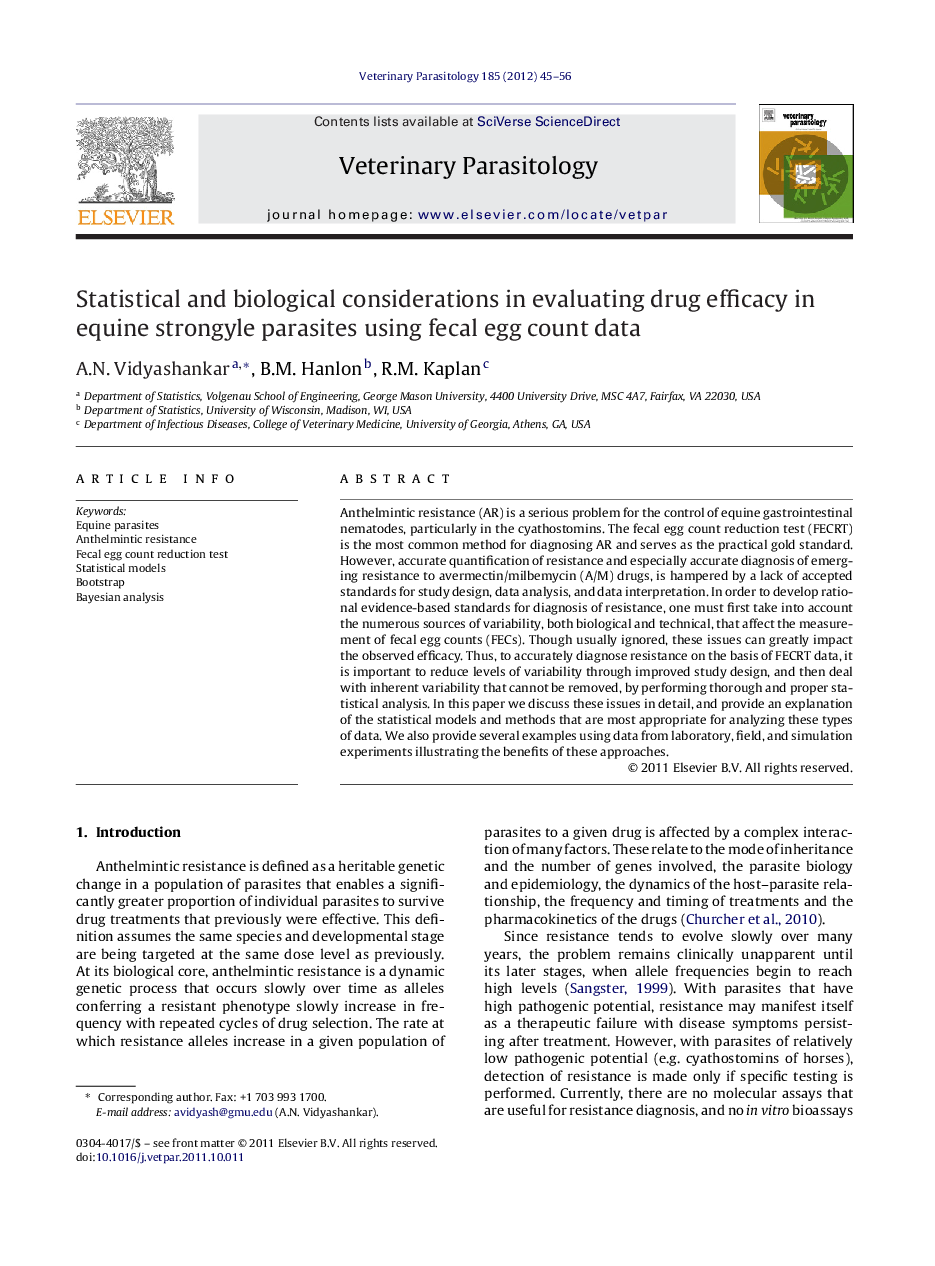| Article ID | Journal | Published Year | Pages | File Type |
|---|---|---|---|---|
| 2470111 | Veterinary Parasitology | 2012 | 12 Pages |
Anthelmintic resistance (AR) is a serious problem for the control of equine gastrointestinal nematodes, particularly in the cyathostomins. The fecal egg count reduction test (FECRT) is the most common method for diagnosing AR and serves as the practical gold standard. However, accurate quantification of resistance and especially accurate diagnosis of emerging resistance to avermectin/milbemycin (A/M) drugs, is hampered by a lack of accepted standards for study design, data analysis, and data interpretation. In order to develop rational evidence-based standards for diagnosis of resistance, one must first take into account the numerous sources of variability, both biological and technical, that affect the measurement of fecal egg counts (FECs). Though usually ignored, these issues can greatly impact the observed efficacy. Thus, to accurately diagnose resistance on the basis of FECRT data, it is important to reduce levels of variability through improved study design, and then deal with inherent variability that cannot be removed, by performing thorough and proper statistical analysis. In this paper we discuss these issues in detail, and provide an explanation of the statistical models and methods that are most appropriate for analyzing these types of data. We also provide several examples using data from laboratory, field, and simulation experiments illustrating the benefits of these approaches.
